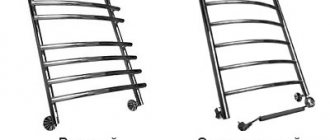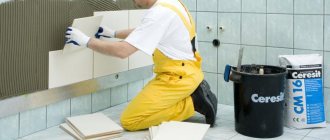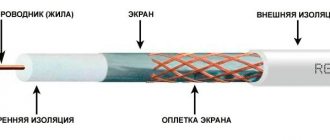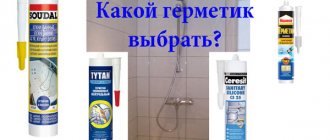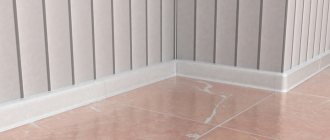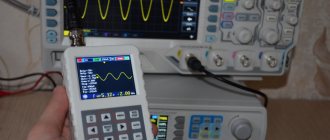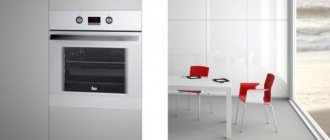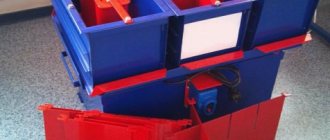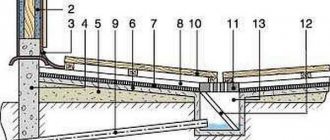Which is better - plastic or wooden baseboard?
Skirting boards made of wood are more environmentally friendly, however, their service life is somewhat shorter. But products made from synthetic plastic, although unnatural, can last up to 100 years.
Plastic skirting boards successfully compete with wooden and other varieties of these products.
The following advantages of plastic skirting boards can be mentioned:
- Can be used in a wide variety of rooms - kitchens, bedrooms, children's and living rooms, bathrooms. A wide range of colors of plastic skirting boards allows you to choose a harmonious combination with the coating and the overall interior.
- Plastic skirting boards are convenient to install because they are stronger, more flexible, and easier to cut.
- They are characterized by fire safety, that is, non-flammable.
- They lend themselves well to wet cleaning and are not afraid of water.
- Available at a price for every buyer.
In addition, plastic skirting boards are often equipped with special gutters through which wiring or other communication cables can be laid.
Thus, we believe that plastic skirting boards in many respects, as a rule, turn out to be much better than wooden ones. The only exceptions can be cases when the interior of the room requires only wooden baseboards.
How to attach a wooden plinth
Gone are the days when skirting boards were a simple plank that closed the gap between the walls and the floor. Today, skirting boards can be used not only for floors, but also for ceilings, and serve as an indispensable element of the interior, emphasizing the unique style of the room. Floor plinths can be made not only from traditional raw materials such as wood, but also from modern artificial materials: MDF or plastic. And before we talk about how to nail a wooden baseboard, let's go back to the recent past.
Additional components
Additional components for plastic skirting boards include plugs, joints, as well as internal and external corners. Each element is selected depending on the color of the baseboard.
The areas of application of the components are:
- Corners serve to give the structure integrity at the joints in the corners of the room.
- To combine two adjacent pieces of plinth along one wall, interplinth joints are used. They look like a small piece of plastic with grooves on both sides.
- The edges of the baseboards are covered with plugs so that the cut area along the edges and at doorways is not visible. They make two types of plugs - right and left, which are often included with the baseboards.
Fasteners for fixing the plinth to the wall are also additional materials.
Do-it-yourself method for attaching floor plinths
Builders practice three ways to attach plastic skirting boards to the floor. Each of them is applicable in different cases and conditions. However, they all provide reliable fixation of plastic skirting boards. This takes into account the width of the floor plinth, its thickness and shape.
Attaching the plinth to the floor with glue can only be done in rooms where the walls do not have unevenness and the angles are strictly 90º. Otherwise, the installed plinth may soon peel off from the wall, which does not look at all aesthetically pleasing.
Fastening the floor plinth to special latches allows for quick installation. The convenience of this fixation method is that it is suitable for work in any conditions and on any surfaces. However, the clamps are suitable for one-time fastening, and after dismantling the skirting boards they will have to be replaced with new ones.
The easiest way to fix skirting boards is to install them directly to the wall. Since installing skirting boards on the floor in this way requires the help of screws, the caps can stand out from the general background. This problem can be solved by gluing plugs to match the color of the baseboards, or by using a special model of products with gutters for cables. In this case, all fastening points will be hidden under the decorative covers of the baseboard. Note that this method is the most budgetary in terms of costs.
Fastening a floor plastic plinth
Having made the calculations and prepared the necessary tools, we begin installation. It's best to start with a long wall. Place a corner on the plinth and place it in the corner of the wall. Make marks at the fastening points. Approximately at a distance of 40-50 cm from one another. The corner should be level, without distortion. Using an impact drill, we punch holes the length of the dowel. Pressing the plinth tightly against the wall, we mark the drilling locations for the plank itself using the holes. We drill holes.
Now we fasten it with screws so that the caps are completely immersed in the baseboard. Secured. Now we close the holes with plugs. You can put them on glue. The planks are installed at the required size. It is better to cut them with a construction knife so that they do not crack. When cutting edges, you need to take into account that the plugs take about 5 mm. The connectors are installed before they are secured.
Fastening with liquid nails
To do this, you will need a hacksaw for cutting plastic, corners, plugs, liquid nails and plinth.
Since floor skirting boards should only be installed using liquid nails on a perfectly flat surface, care should be taken to prepare the wall in advance. It is optimal if professional putty or plasterboard covering is carried out.
Starting from the corner, drops of liquid nails should be applied to the flat surface of the wall every 3-5 cm. From the side of the free end, an inter-plinth connection should be glued to the baseboard, ensuring ease of further installation.
Note that it will be easier to work if you apply the adhesive not to the wall, but to the baseboard.
Next, the canvas is pressed firmly against the wall, ensuring a good fit along the entire length of the baseboard. In order for the glue to set, you should press the plinth for about 1 minute, after which it will no longer fall off and further hardening will occur without intervention. All other skirting boards around the perimeter of the room are fastened in a similar manner.
It is advisable not to skimp on liquid nails, since high-quality glue will provide a longer and more reliable fixation.
Methods for attaching skirting boards to the floor
Modern profiles, regardless of the material of manufacture, are distinguished by functionality, practicality and versatility. They can be installed in several ways:
- For hardware. First, a through hole is made in the rail, then a nail or self-tapping screw is inserted into it, after which they are fixed to the base using a hammer or screwdriver. If you need to attach the plinth to concrete, first drilling is done, then a plastic dowel is inserted into the hole.
- Liquid Nails. This is the easiest and fastest way to install profiles of any type. The glue is viscous enough to hold the product even under strong mechanical stress. The downside is that the decision to glue the planks is fraught with difficulty in dismantling them. It is almost impossible to do this without damaging the baseboards.
- Clips and straps. The hidden installation method involves attaching only supporting structures to the base, into which slats are then inserted. First, the clips or strips are screwed to the floor, and then with a light pressure of the hand the profile is attached to them.
For clips
For liquid nails
For self-tapping screws
When purchasing a plinth, you should ask the seller about the features of its fastening, since in some cases one or another method may not be applicable to certain repair conditions.
Sequence of work
First of all, markings should be applied to the wall to place the fasteners. Using the markings, holes are drilled in the wall to match the dimensions of the dowels, and then they are installed. The clip is screwed to the wall using a screw.
All subsequent fastenings are screwed in the same way. This method is optimal when working with brick and concrete walls. If the wall is wooden, then self-tapping screws are suitable for fixing the clips.
The distance between fasteners can be 50 cm, provided the surfaces are smooth, or 20-40 cm if the walls have uneven surfaces.
You can mount the baseboard itself into the installed fasteners, having previously cut it to the length of the wall.
In this case, no special knowledge is required on how to install floor plinths with clips. All you need to do is lean the baseboard against the latches and press until it clicks. Between adjacent sections, connections are put on the ends of the plinth for ease of joining. Each subsequent panel is attached to clips in the same way.
At the end of the work, the open ends must be closed with plugs, and the joints in the corners with special corners. To keep them more secure, you can place these elements on liquid nails.
For carpeting, specially shaped skirting boards are produced with recesses for the edges of the coverings. These skirting boards do not need to be removed if you decide to replace the floor covering.
Wooden plinths belong here
There are several ways to attach solid wood baseboards. Skirting boards with a height of 80-150 mm are considered high and are most often fastened with self-tapping screws. The head of the screw must be recessed into the wood, and the remaining hole must be closed with a special cap or sealed with wax, the color of which is almost indistinguishable from the baseboard. Self-tapping screws should be screwed in every 30-50 cm. The larger the size of the plank, the smaller the step should be left between the screws.
Another way to fasten a wooden baseboard is to fasten it with galvanized finishing nails. These nails have a small round head. The cap fits into the baseboard wood, leaving a small hole behind. If you cover it with wax in the color of the baseboard, then it is almost impossible to notice. This method is most common among craftsmen because it requires experience, precision and accuracy when working.
If you purchased a veneered plinth, then to fasten it you need to use the clips that come with the dowel and screw. This installation method allows you to protect the surface of the planks from various physical damage. The veneered decor has a special slot in the base. After securing all the clips, the plinth is simply put on them. This type of wooden baseboard can also be nailed with “liquid nails”. To do this, the wall must be clean and dry.
While the wooden plinth is being attached, you need to work very carefully. The planks must be cut accurately and without clearly visible fasteners. Installing a wooden frame decor most often successfully completes all the work done on finishing the room.
It's time to forget all the sorrows of renovation, enjoy the luxurious interior and classic design of a cozy room!
Method of through fixation of skirting boards
Another way to attach plastic floor skirting boards is to drill through holes in them for screws.
To do this, take a hacksaw, drill and self-tapping screws. This method is relevant in utility rooms, where no one will pay attention to aesthetic beauty.
First of all, the wall is marked and a piece of plinth of the required size is measured. There are holes in it that are sufficient to insert a self-tapping screw, but narrower than its head. Next, the plinth is applied to the wall and all the screws are screwed in.
If the product is solid, without a cable channel, then the caps can be masked with decorative plugs. In brick walls, before attaching the baseboards to the floor, you should drill holes for the dowels. In this case, the baseboard will be fixed with screws.
How to fix a plinth to a concrete wall?
The use of skirting boards solves two problems at the final stage of arranging rooms. The first is sealing the technological seam, wires, flaws, the second is adding the final touches to the interior. The presence of a plinth is a mandatory criterion, without which the renovation of an apartment or house will not be complete. The appearance and service life depend on how it is attached. Improper fixation will lead to cracks and the product falling off.
If you are going to install a plastic baseboard with your own hands, you must first remove from the room all objects that may interfere with work or move them to the center of the room, and also remove all debris along the walls. The walls must be prepared, it is necessary to remove unnecessary irregularities and clean them from dust.
You should start working from the far corner of the room and gradually approach the exit. Installation of plastic skirting boards is possible in any room where it is needed. It is important to ensure a tight fit to the wall and floor. Which fasteners to choose for the panels depends on the material of the walls and floor covering.
Towards a concrete wall
When the walls are built of concrete or brick, the installation of plastic skirting boards is carried out using liquid nails or dowel nails.
To drywall
When the walls are pre-finished with plasterboard, this option uses screws with dowels (butterfly) for plasterboard. If a metal profile is laid along the floor, you can use metal screws, and installation can also be done using liquid nails.
To the floor
The plinth is attached directly to the floor quite rarely: this is done if it is necessary to close a large gap between the floor covering and the wall or when the structure of the wall does not allow the plinth to be securely fastened to it. In this case, the mounting methods are the same as on the walls, but there is a nuance. The plinth itself must be turned with the wide side towards the floor, and the narrow side towards the wall, so that the height will be less than the width, or choose products with a wide base.
Attaching plinth to concrete wall
Installing cables under the baseboard
Any communication wires, whether for a telephone, TV or Internet, can be hidden under the baseboards.
This operation is performed in one of the following ways:
- Inserting wires under the clamps before attaching them. In this case, care should be taken not to damage the cables with self-tapping screws.
- The screws of the already attached skirting boards are unscrewed a little (by 5-7 mm) so that the cable can be passed under them. After this, the screws are tightened again as before.
- The cables can be laid along the channel provided in the plinth, which is covered with a decorative cover upon completion of the work. Thus, the mounting points and cables become invisible.
It is worth remembering that when working with power wires, you should turn off the current supply at the panel.
The plinth must meet the design requirements
A wooden fillet can complement any interior detail. Now designers are trying to link it with the overall vision and concept, with how they themselves imagine the combination of various decorative and interior elements. The quality of manufactured skirting boards and the originality of their design naturally raise the price of the decor. Of course, having paid decent money for building materials, I would not want them to be installed haphazardly. Exclusive products require high skill of performers when attaching them. Agree, if a “miracle” specialist knows only one way to fasten a wooden plinth - simply nail it, then it is better not to trust such a “master” to finish your room. Even screwing fillets with black self-tapping screws will have a rough appearance, which is quite capable of ruining the entire interior.
